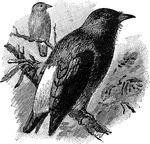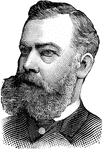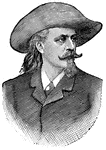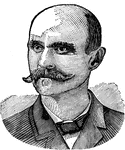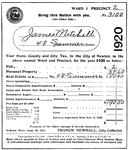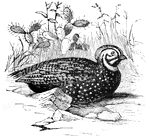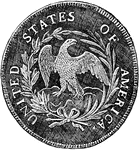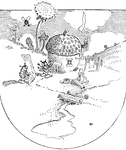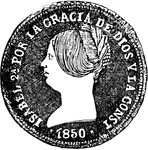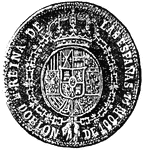
Goosander
"The Goosander is a web-footed bird in the duck family. The adult male, which measures 26 inches in…
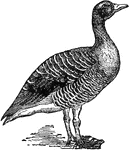
Wild Goose
"Goose is the name of a well-known family of natatorial birds. The domestic goose is believed to have…

Goosander
"The Goosander is a web-footed bird in the duck family. The adult male, which measures 26 inches in…
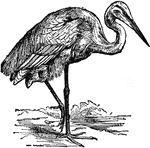
Heron
"Heron is the common name of birds of the genus Ardea. The herons are distinguished by having a long…
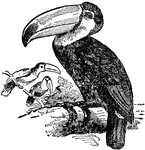
Toucan
"The Toucan, in ornithology, is the popular name of any bird of the genus Rhamphastos. They are all…

Turnstone
"Turnstone is a small genus of birds of the plover family, intermediate between the true plovers and…

Green Woodpecker
"Woodpecker is the popular name of the old Linnæan genus Picus, now greatly divided. Woodpeckers…
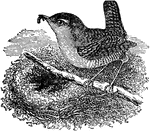
Wren
"Wren is a genus of birds, having a slender, slightly curved, and pointed bill; the wings very short…
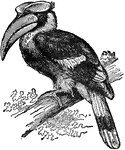
Hornbill
"Hornbills are a remarkable group of birds confined to Southern Asia and Africa, akin to the kingfishers…
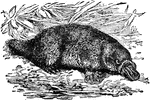
Ornithorhynchus
"Ornithorhynchus, commonly called duckbill or watermole, is a small quadruped found in Australia and…

Penguin
"The Penguins are aquatic birds confined to the high S. latitudes or both hemispheres, where they congregate…
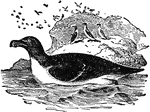
Razorbill
"The Razorbill is an aquatic bird, the common auk, the sole species of the genus, the great auk being…

Shoe-Billed Stork
The Shoe-Billed Stork is a bird related to the Storks that feeds on creatures that live in muddy water.
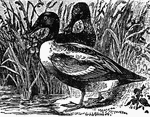
Shoveler Duck
"The Shoveler is the broadbill or spoonbill duck, widely distributed over the Northern Hemisphere. Length…

Spoonbill
"Spoonbill is the popular name of the birds of the genus Platalea, belonging to the heron family (Ardeidæ),…
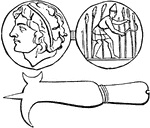
Falx
"A sickle; a scythe; a pruning knife or pruning hook; a bill; a falchion; a halbert. As culter denoted…

Swordbill
"Swordbill is a popular name for any individual of the humming bird genus, Docimastes. The bill which…
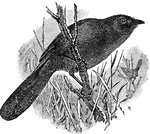
Wrentits
Having the plumage extremely lax and soft; rounded wings much shorter thn long, narrow, graduated tail;…
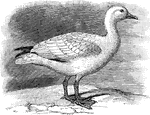
Snow Goose
The lamellæ of the bill are conspicuous by reason of the divergence of the edges of the mandibles,…
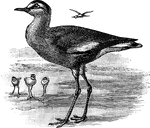
Spur Winged Plover
The wing is armed with a horny tubercle or spine, sometimes rudimentary; the base of the bill in most…

Marsh Hawk
A bird of the harriers, having an incomplete facial disk and large ear pars, as in some owls, a week…
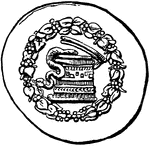
Cistophorus
The front of a Greek silver coin weighing on the average around 193 grains, first issued by the kings…
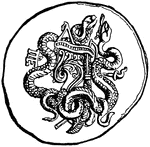
Cistophorus
The back of a Greek silver coin weighing on the average around 193 grains, first issued by the kings…
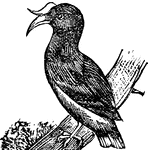
Hornbill
A large bird, found in Africa and Asia, having a large bill curved downward, on which is a process resembling…
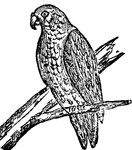
Parrot
A climbing bird of brilliant color, having a fleshy tongue, and a short, hooked bill toothed above.
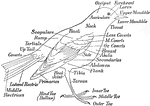
Labeled bird
"When a new bird is seen, the observer should write an accurate description of it in his notebook, giving…

Red Crossbill
A bird in which each mandible of the bill is laterally deflected, so the tips of the two mandibles cross…

Kingfisher
A family of incessorial birds noted for their bright plumage, stout bill, strong feet, and short tail.
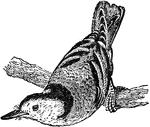
Nuthatch
A genus of birds found widely distributed in Eurasia, which somewhat resemble the starlings and woodpeckers.…

Oystercatcher
A wading bird closely allied to the plover. it is easily known from its red feet and bill, the latter…
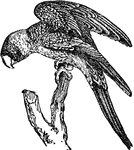
Parrot
A genus of tropical birds classes with the climbers. The genus includes many beautiful species, most…
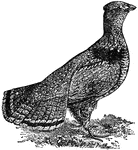
Partridge
A genus of birds of the grouse family, including a number of widely different species of game birs,…

Pelican
A genus of webfooted water birds remarkable for their broad bill with a pouch under it. The bill is…
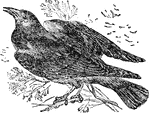
Rook
A species of crow. It differs from other birds of the crow family in having a naked spot at the base…

Swallow
An extensive genus of birds found in all parts of the world. They are distinguished by a short, depressed…
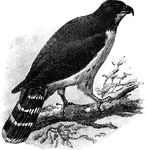
Cayenne Hawk
The tarsus is bare below; the nostrils are linear and oblique; the lores are bare; the bill is slender…

Woodpecker Tongue
This illustration shows the special development of tongues of woodpeckers; a, skull of flicker, showing…

Curlew
The curlews are a group of eight wader species, characterised by a long slender downcurved bill and…
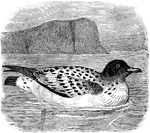
Cape Pigeon
They have the bill comparatively dilated, with a wide and partly naked interramal space, oblique sulci…
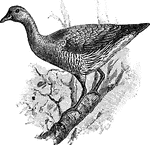
Australian Tree Duck
A duck with a bill longer than its head and curved downward. Its legs are long and fitted with bird…
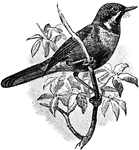
Pectoral Honey Creeper
A bird with a very acute curved bill finely serrate along a part of the cutting edges, and the toungebifid,…

Sword Bearing Hummingbird
A bird with a long, skinny bill. The bill is used to probe long tubular flowers for food.
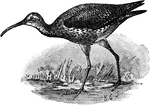
Dough Bird
It has a long slender bill only about two inches long. It is abundant during its migrations, and is…
